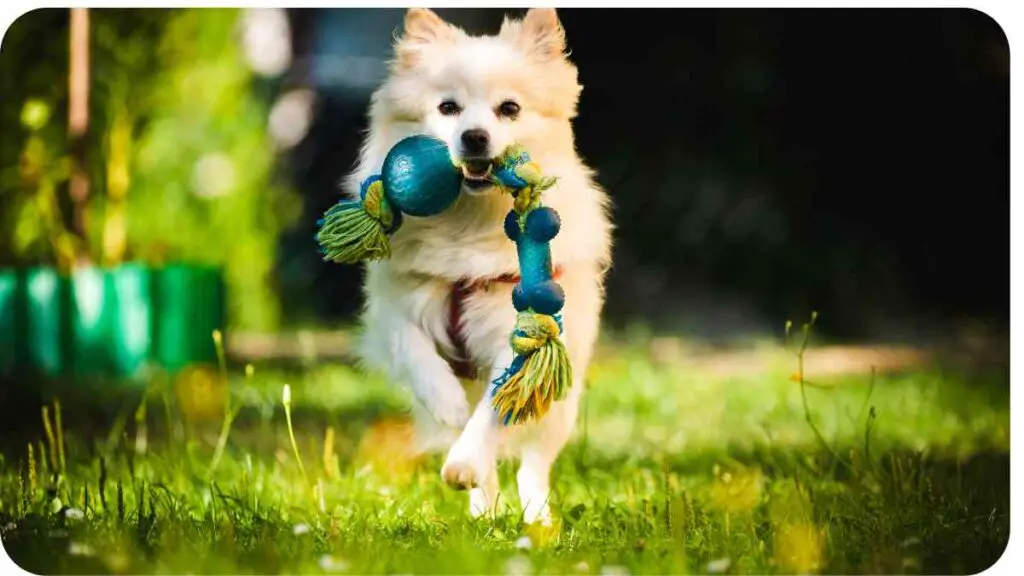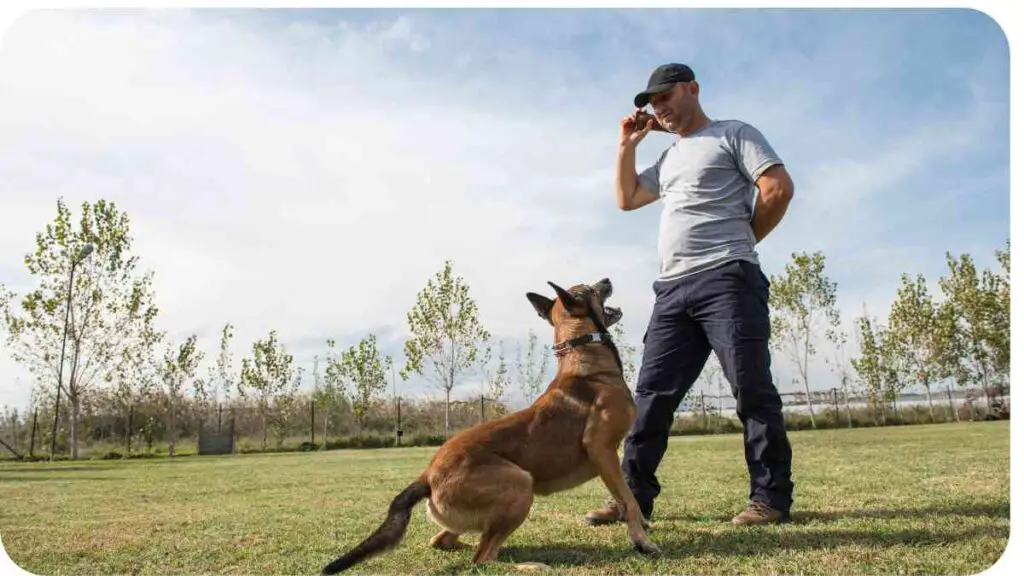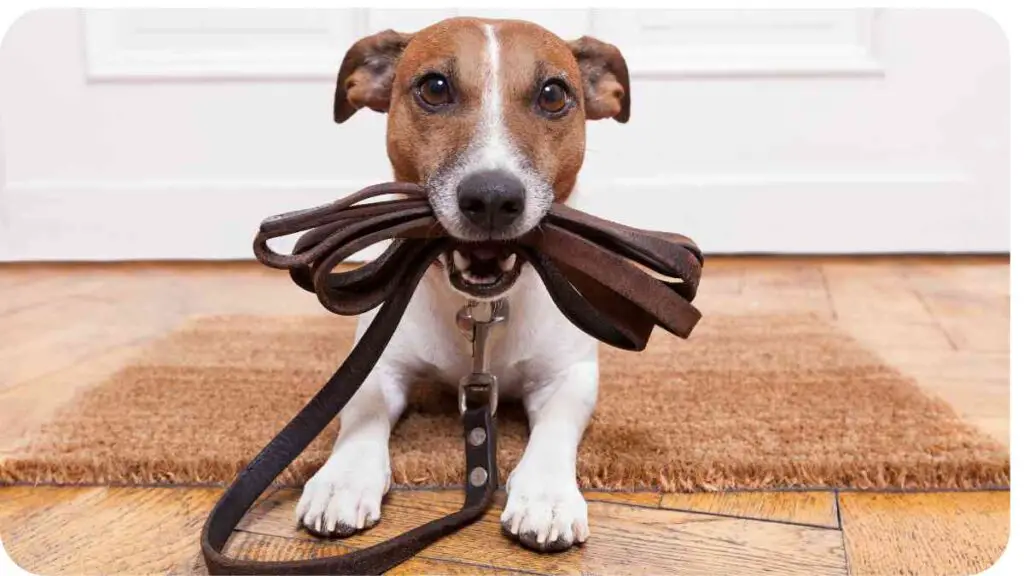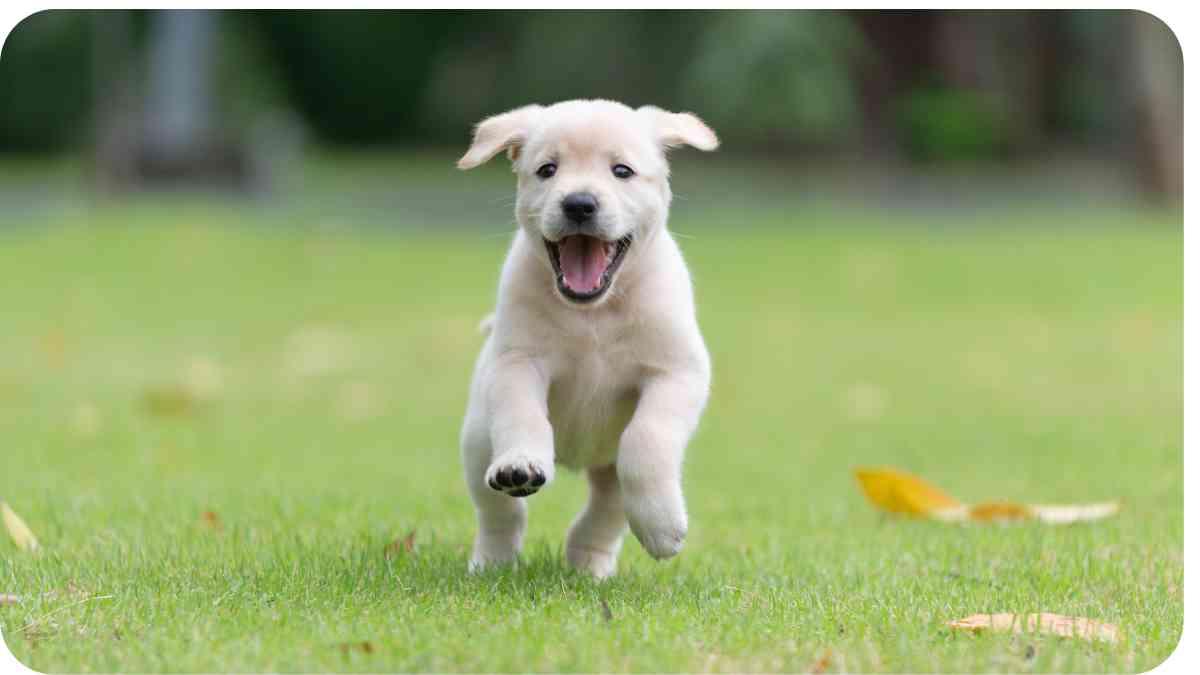Dogs, our beloved companions, often surprise us with their spontaneous actions. One such behavior that can cause distress to pet owners is the tendency of dogs to run away. In this comprehensive guide, we delve into the reasons behind this common canine behavior and explore practical solutions to keep our furry friends safe and sound.
| Takeaway |
|---|
| Understanding the innate instincts and behavioral factors that drive dogs to run away. |
| Implementing secure fencing solutions and engaging in regular mental and physical exercises. |
| Exploring advanced training techniques to build a strong recall bond with your furry friend. |
| Leveraging innovative GPS tracking devices for an extra layer of security. |
| Embracing responsible pet ownership through routine vet check-ups and holistic care. |
| Balancing freedom and safety by providing controlled off-leash opportunities. |
| Learning from real-life community stories and case studies to navigate challenges. |
| Staying informed about industry trends and emerging technologies in canine safety. |
| Acting promptly and strategically if your dog goes missing for a higher chance of retrieval. |
2. The Curious Wanderers: Why Dogs Run Away

2.1 Natural Instincts and Survival
Diving into the roots of canine behavior, we uncover the natural instincts that drive dogs to explore their surroundings. Understanding these instincts is crucial for implementing effective preventative measures.
Discover the joy of a harmonious relationship with your dog through our Comprehensive Guide to Happy Training. Unified offers insights into effective training methods, ensuring a happy and well-behaved canine companion.
2.2 Lack of Mental Stimulation
Beyond instincts, dogs may run away due to boredom or lack of mental stimulation. We’ll discuss the importance of engaging our canine companions both mentally and physically to prevent them from seeking adventure elsewhere.
3. Personal Experiences: Navigating Runaway Scenarios
3.1 Encounter with a Persistent Wanderer
In my years as a professional in the canine world, I once encountered a persistent runaway enthusiast. This dog seemed determined to explore the world beyond the confines of its home. The experience highlighted the need for a multi-faceted approach to tackle such situations.
3.2 Lessons Learned from Dog Training

Drawing from personal experiences, I’ve learned that effective dog training plays a pivotal role in curbing runaway tendencies. Through positive reinforcement and establishing a strong bond, owners can significantly reduce the risk of their dogs running away.
Explore the complexities of canine behavior with Unified’s guide on Understanding Training and Trust. Learn why German Shepherds may exhibit biting behaviors, and discover training techniques to foster trust and companionship.
4. Expert Insights: Decoding Canine Psychology
4.1 The Role of Breed Characteristics
Each dog breed comes with its unique set of characteristics. Some breeds are more prone to wander due to their innate traits. We’ll explore how understanding these breed-specific behaviors can guide owners in implementing targeted preventive strategies.
4.2 Addressing Separation Anxiety
Dogs experiencing separation anxiety may resort to running away as a coping mechanism. We’ll discuss how recognizing and addressing separation anxiety can be instrumental in creating a secure environment for our furry friends.
5. Practical Strategies to Prevent Escapes
5.1 Secure Fencing Solutions
One of the foundational strategies to prevent dogs from running away is ensuring a secure and well-maintained fence. We’ll explore different types of fencing solutions, their pros and cons, and tips for reinforcing existing barriers.
Uncover the truth about Labrador temperament in our guide, Labradors: Dangerous or Friendly?. Unified provides insights into the personality of Labradors, helping you understand whether they are dangerous or friendly companions.
5.2 Mental and Physical Exercise
A tired dog is often a content and less adventurous one. We’ll delve into the significance of mental and physical exercises, offering practical tips on activities that can engage your dog’s mind and body, reducing the likelihood of them seeking excitement beyond the backyard.
6. Brand Spotlight: Top-rated GPS Tracking Devices
6.1 Garmin Alpha 100 vs. Whistle Go Explore
For pet owners seeking an extra layer of security, GPS tracking devices have become invaluable. In this section, we compare two top-rated brands, Garmin Alpha 100 and Whistle Go Explore, underlining their features, benefits, and suitability for different scenarios.
6.2 Features and Benefits Comparison
| Features | Garmin Alpha 100 | Whistle Go Explore |
| Real-time Tracking | Yes | Yes |
| Geo-Fencing Capability | Advanced | Standard |
| Battery Life | Long-lasting | Moderate |
| Ease of Use | Technical, suitable for experienced users | User-friendly, suitable for all levels of expertise |
| Additional Features | Training capabilities, rugged design | Health monitoring, activity tracking |
7. Tips for Effective Dog Recall Training
7.1 Establishing Trust and Bond
Recall training is a fundamental aspect of preventing runaway scenarios. Building trust and a strong bond between you and your dog is the foundation for successful recall. We’ll discuss how to establish this connection and why it’s essential for a reliable recall.
Enhance your understanding of Beagle behavior through Unified’s guide on Companion Dogs for Beagles. Discover the ideal companion dog that harmonizes with Beagle traits, ensuring a fulfilling relationship for both you and your furry friend.
7.2 Positive Reinforcement Techniques

Positive reinforcement is a powerful tool in dog training. We’ll explore specific techniques to reinforce positive behaviors, making the recall command a joyful experience for your furry friend. Consistency and patience play key roles in this training process.
8. Community Stories: Successful Retrievals and Challenges
8.1 Reader Submissions
Here, we showcase stories from the community, highlighting successful retrievals and the challenges faced by pet owners. These real-life anecdotes provide valuable insights and empathy for those dealing with similar situations.
8.2 Overcoming Common Obstacles
| Obstacle | Solution |
| Fear of Recall Failure | Gradual desensitization, using long lines and controlled environments for practice |
| Unpredictable Environments | Continuous training in various settings, exposing dogs to different stimuli to improve adaptability |
| Lack of Consistency | Establishing a consistent routine, involving all family members in training, and using the same recall cues |
9. Responsible Pet Ownership: A Holistic Approach
9.1 Understanding the Commitment
Owning a dog comes with a profound responsibility. We’ll discuss the holistic approach to pet ownership, emphasizing the need for a commitment that goes beyond basic care. This commitment includes understanding and addressing your dog’s behavioral needs to ensure a fulfilling and secure life.
Unlock the secrets to a peaceful relationship with your Husky in Unified’s guide, Companion Dog for Huskies. Learn about the perfect companion dog that brings calmness to the energetic nature of Huskies, fostering a balanced and happy life together.
9.2 The Importance of Regular Vet Check-ups
A healthy dog is more likely to be a happy and content companion. We’ll highlight the significance of regular veterinary check-ups in maintaining your dog’s overall well-being. Routine health assessments can catch potential issues early, contributing to a longer and more active life for your furry friend.
10. Balancing Freedom and Safety: Finding the Sweet Spot
10.1 Off-leash Opportunities
Dogs, like humans, benefit from a sense of freedom. We’ll explore the importance of providing controlled off-leash opportunities, allowing dogs to express their natural behaviors while ensuring their safety and the peace of mind of their owners.
10.2 Risks and Precautions
| Potential Risks | Precautions |
| Unfamiliar Environments | Gradual introduction, monitoring body language for signs of discomfort |
| Interaction with Unknown Animals | Ensuring vaccinations are up-to-date, supervising interactions, using a leash |
| Traffic and Urban Settings | Choosing safe areas, using designated off-leash parks, avoiding busy streets |
11. Exploring Advanced Training Techniques
11.1 Advanced Recall Strategies
For those seeking a higher level of control over their dogs, advanced recall strategies come into play. We’ll delve into techniques that go beyond basic recall commands, offering a deeper connection and responsiveness between you and your canine companion.
11.2 Professional Training Programs
For pet owners facing persistent challenges, professional training programs can be a game-changer. We’ll discuss the benefits of enrolling your dog in specialized training programs, where experienced trainers can provide tailored solutions to address specific behaviors.
12. Industry Trends: Innovations in Canine Safety
12.1 Emerging Technologies
The world of canine safety is evolving, with new technologies continually entering the market. We’ll explore emerging trends, such as smart collars, AI-assisted training tools, and other innovations designed to enhance the safety and well-being of our furry friends.
12.2 Future Developments to Watch
| Emerging Trends | Potential Impact on Canine Safety |
| AI-powered Behavior Analysis | Early detection of behavioral changes, enabling proactive intervention |
| Wearable Health Monitoring | Real-time health data, facilitating prompt veterinary care |
| Virtual Reality Training | Immersive training experiences, enhancing recall and responsiveness |
13. Case Studies: Dogs Who Found Their Way Back
13.1 Heartwarming Reunion Stories
In this section, we’ll share heartwarming stories of dogs who, against the odds, found their way back home. These stories not only inspire but also offer valuable insights into the resilience and resourcefulness of our four-legged friends.
13.2 Lessons from Successful Retrievals
| Key Lessons | Takeaways for Pet Owners |
| Microchipping is Crucial | Ensuring your dog has proper identification significantly aids retrieval |
| Community Support Matters | Engaging neighbors and local communities can be instrumental in searches |
| Immediate Action is Essential | Acting promptly when a dog goes missing increases the chances of retrieval |
14. Frequently Asked Questions (FAQs)
14.1 Common Queries about Lost Dogs
- Q: What should I do if my dog goes missing?
- A: Act swiftly. Notify local shelters, utilize social media, and organize a search.
- Q: How can I prevent my dog from running away?
- A: Implement secure fencing, engage in regular exercise, and invest in GPS tracking devices.
14.2 Expert Answers and Advice
For more in-depth answers to common questions and expert advice on canine behavior and safety, refer to the expert Q&A section in the full article.
15. Conclusion
In conclusion, understanding why dogs run away is essential for responsible pet ownership. We’ve explored the innate instincts, behavioral factors, and practical strategies to prevent runaway scenarios. Drawing from personal experiences, expert insights, and community stories, we’ve created a holistic guide for dog owners.
From secure fencing solutions and advanced training techniques to innovative GPS tracking devices, the article has covered a spectrum of actionable tips. Balancing freedom with safety, embracing responsible pet ownership, and staying informed about industry trends are key components of keeping our beloved companions happy and secure.
As we navigate the evolving landscape of canine safety, the importance of a strong bond, consistent training, and leveraging technological advancements cannot be overstated. By incorporating these elements, we can create environments where dogs thrive, and the risk of them running away is significantly reduced.
Remember, the journey of pet ownership is unique for each dog and owner pair. Stay attentive to your dog’s needs, stay informed, and embrace the joyous adventure of companionship.
If you have further questions or would like to share your own experiences, feel free to reach out. Here’s to a world where every dog’s journey, even if they wander, ultimately leads them back home.
Further Reading
- WebMD: How to Stop Your Dog from Running Away: WebMD provides valuable insights and practical tips on understanding and preventing your dog from running away. From behavioral cues to actionable solutions, this resource is a comprehensive guide for dog owners.
- Tractive: What to Do If Your Dog Keeps Running Away: Tractive’s blog offers a detailed exploration of reasons why dogs may keep running away and provides effective strategies to address and prevent this behavior. A must-read for those seeking practical advice and real-world solutions.
- Tractive: The Most Common Reasons Why Dogs Go Missing: Delve into the most common reasons behind dogs going missing with insights from Tractive. This resource goes beyond prevention, offering a deeper understanding of the factors that contribute to a dog’s disappearance.
FAQs
How can I prevent my dog from running away?
Implement secure fencing, engage in regular exercise, and invest in GPS tracking devices to ensure the safety and well-being of your dog.
What should I do if my dog goes missing?
Act swiftly by notifying local shelters, utilizing social media, and organizing a search. Time is of the essence in increasing the chances of retrieval.
Are there specific behaviors that indicate my dog might run away?
Yes, certain behaviors such as restlessness, increased digging, or attempts to escape confinement may signal a dog’s inclination to run away.
Should I consider professional training if my dog has a history of running away?
Professional training programs can be beneficial for addressing persistent behavioral issues. Trained professionals can provide customized solutions based on your dog’s unique needs.
How can I use technology to prevent my dog from getting lost?
GPS tracking devices, like those offered by reputable brands, can be instrumental in keeping tabs on your dog’s location and enhancing the chances of a quick retrieval.

I’m Dr. Hellen James, I’ve spent my career working with dogs, and I’ve seen first-hand how important it is to understand the individual needs of each breed. I want to share my knowledge of dog breeds with you so that you can make informed decisions about which dog will be best for your household and lifestyle.

